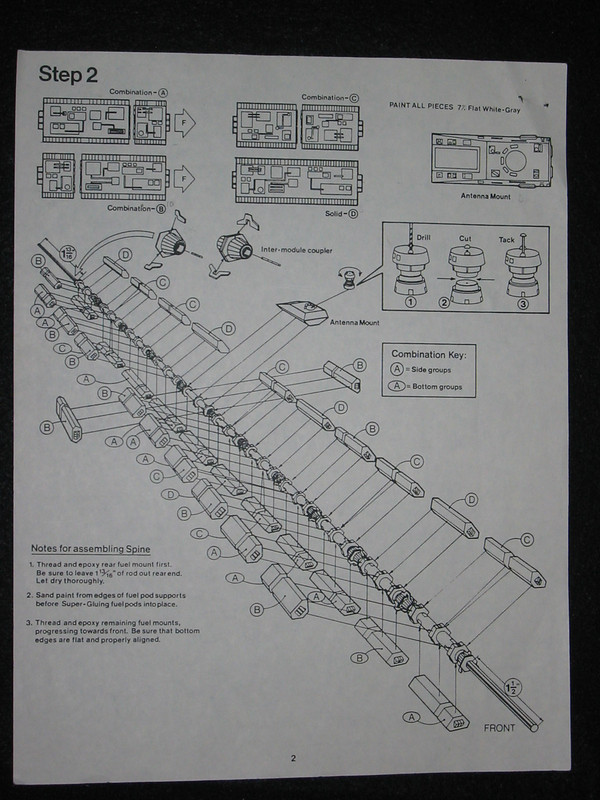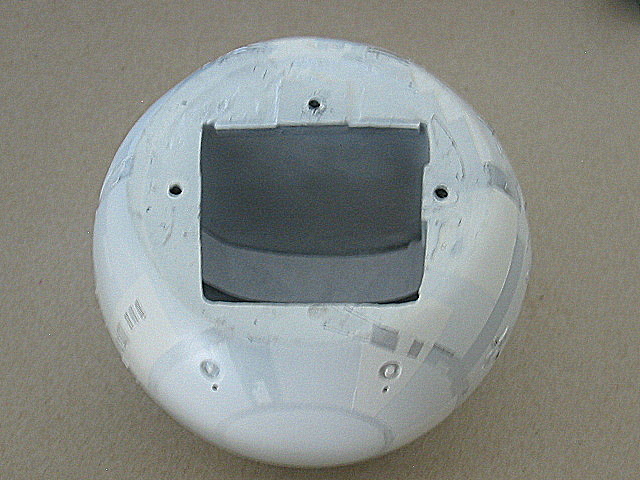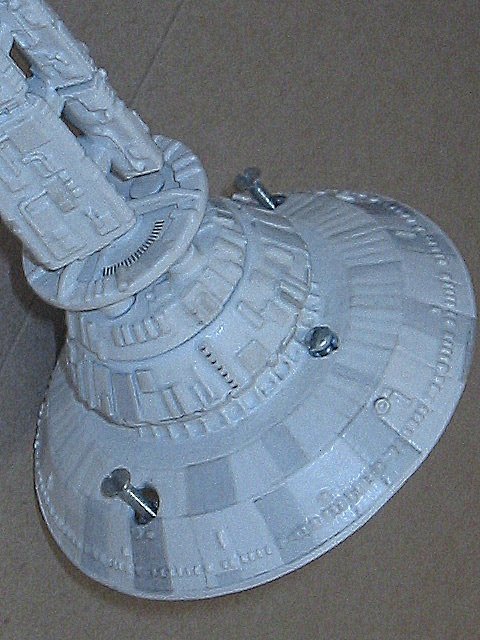Thanks for the kind words! I'm pleased everyone enjoyed the images.
I purchased this kit from Mike Evans on March 10th, 1989 (Lunar Models receipt #4788) and have kept it in storage until about a year ago. Being one of the early versions of this kit by Lunar Models it features a semi-solid command sphere (with a square void), a solid resin engine module, six piece one man pod, and multiple part spine assembly. The casting on this early production run kit is good, especially the engine module. Later versions from Lunar Models were changed to include a hollow command sphere, one piece pod, hollow engine module, and pre-formed spine parts. The casting quality of these later version kits is often reported as being poor, especially the spine parts.
Here are the kit assembly instructions which show features of the early version of the kit, especially the square void of the command sphere and the spine assembly:




At the time this kit was first issued, it was generally considered to be state of the art. Compared to current standards, this kit is lacking in many areas. Accuracy is a problem, but the kit can be greatly enhanced with some scratch building and modifications. Alignment is critical with this kit and careful preparation of the parts is critical.
I constructed the spine from a solid steel rod with steel hex nuts in place of the kit parts for the fuel/cargo pod supports. The spine couplers were scratch built from modified plastic dry wall anchors as the kit parts were badly formed and did not look right. I made two assembly jigs - one to align the spine and fuel/cargo pods and the second to uniformly sand and level the bottoms of each fuel/cargo pod part.
The command sphere neck collar parts were extensively modified to improve accuracy and the collar area of the engine module was scratch built. The three engine exhaust assemblies were cut apart, extended, and enhanced with some surface details to improve accuracy. The antenna mount base was scratch built to be more accurate and I enlarged/modified the emergency airlock door on the command sphere to give it a more accurate appearance.
I wanted to include LED lighting and a pod bay, so I used the pod bay floor part from kit and embedded a tiny switch that is activated by moving the pod platform rails in and out. Because the command sphere is only semi-hollow with a square opening on the inside, I had to construct a square type of pod bay structure to fit. While this is not accurate, it seems to look pretty good from the outside. The pod bay walls were made from sheet styrene with printed paper details. The test bench is the modified kit part with details from various decals. There is no room for the cockpit details, so I used a printed a scene from the movie and placed it on the inside of the window so that lit from behind by the LED's, it provides a good impression of the command deck interior. Once assembled, the one man pod was carefully hollowed out for the LED and holes drilled for the headlamps. Small sections of clear rod with one end heat rounded were used for the headlamp lens. The three LED's are powered by button type watch batteries in a compartment on the rear of the pod bay assembly. Everything is inside in the command sphere, there are no external wires or switches. The pod bay assembly is secured by a tiny machine screw and the command sphere is secured to the collar/neck part with three small machine bolts and matching nuts imbedded in the command sphere.






Painting and detailing involved a wide range of paints and various decals. All of the kit parts were made of a dark tan resin with a thick coating of oily mold release which required careful cleaning. I used my airbrush, rattle cans, and some brush work in the painting process. Panel shading was done with airbrush or decals depending on the size. Following a gloss clear coat, I applied a very thin black wash and then sealed everything in a flat clear coat.
The completed model measures 32.5 inches from the end of the engine nozzles to the tip of the one man pod arms. I am currently using temporary supports for display purposes until I can determine the exact locations to support the model to avoid curving of the spine.
Thanks again for having a look and for your questions and comments.
Cheers,
Bill